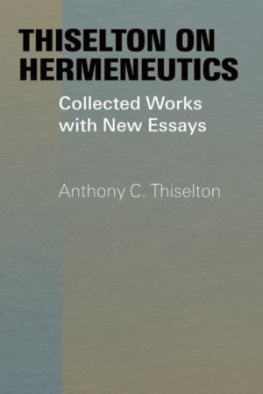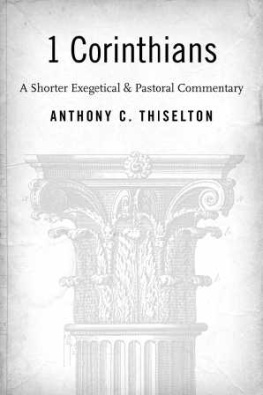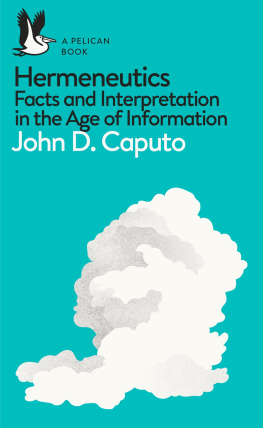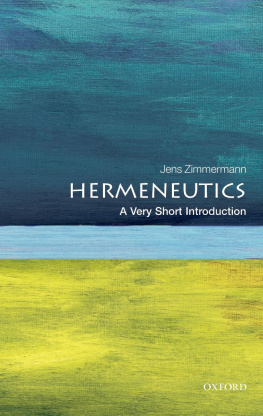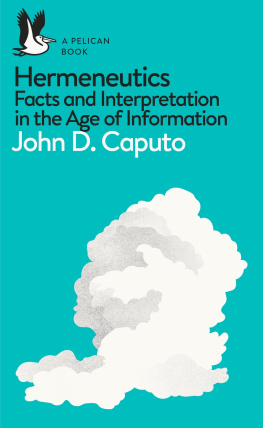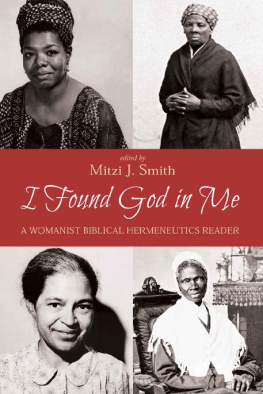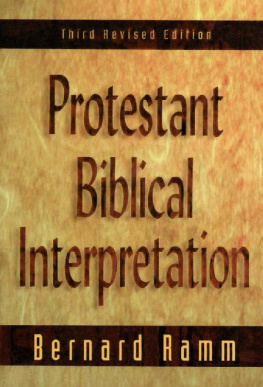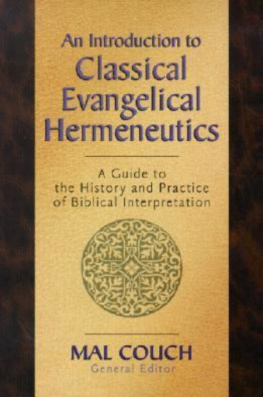Thiselton - Hermeneutics: an introduction
Here you can read online Thiselton - Hermeneutics: an introduction full text of the book (entire story) in english for free. Download pdf and epub, get meaning, cover and reviews about this ebook. City: Grand Rapids;Mich, year: 2009;2015, publisher: William B. Eerdmans Publishing Company, genre: Religion. Description of the work, (preface) as well as reviews are available. Best literature library LitArk.com created for fans of good reading and offers a wide selection of genres:
Romance novel
Science fiction
Adventure
Detective
Science
History
Home and family
Prose
Art
Politics
Computer
Non-fiction
Religion
Business
Children
Humor
Choose a favorite category and find really read worthwhile books. Enjoy immersion in the world of imagination, feel the emotions of the characters or learn something new for yourself, make an fascinating discovery.

Hermeneutics: an introduction: summary, description and annotation
We offer to read an annotation, description, summary or preface (depends on what the author of the book "Hermeneutics: an introduction" wrote himself). If you haven't found the necessary information about the book — write in the comments, we will try to find it.
Thiselton: author's other books
Who wrote Hermeneutics: an introduction? Find out the surname, the name of the author of the book and a list of all author's works by series.
Hermeneutics: an introduction — read online for free the complete book (whole text) full work
Below is the text of the book, divided by pages. System saving the place of the last page read, allows you to conveniently read the book "Hermeneutics: an introduction" online for free, without having to search again every time where you left off. Put a bookmark, and you can go to the page where you finished reading at any time.
Font size:
Interval:
Bookmark:
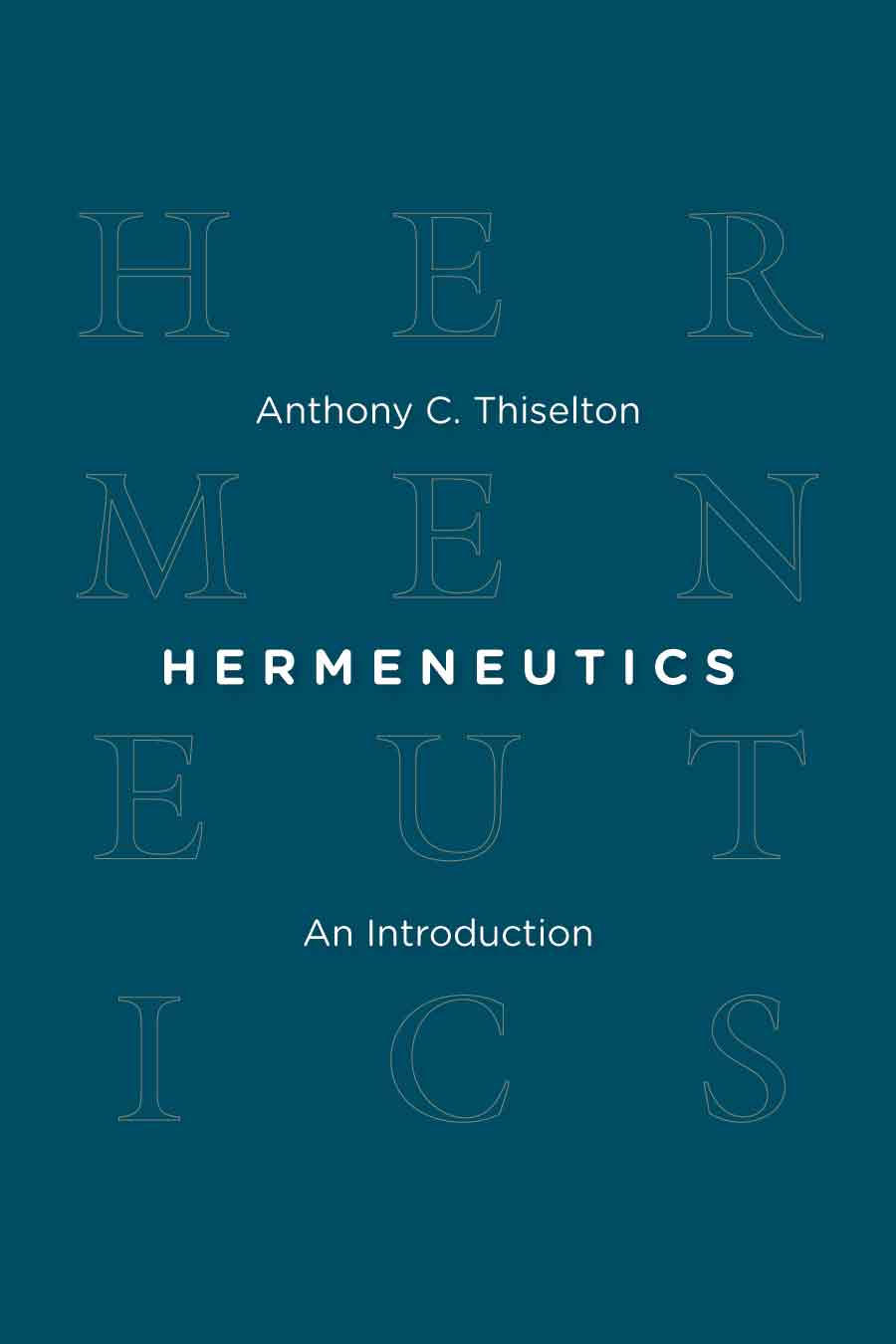
Hermeneutics
An Introduction
Anthony C. Thiselton
William B. Eerdmans Publishing Company
Grand Rapids, Michigan / Cambridge, U.K.
2009 Anthony C. Thiselton
All rights reserved
Published 2009 by
Wm. B. Eerdmans Publishing Co.
2140 Oak Industrial Drive N.E., Grand Rapids, Michigan 49505 /
P.O. Box 163, Cambridge CB3 9PU U.K.
Printed in the United States of America
Library of Congress Cataloging-in-Publication Data
Thiselton, Anthony C.
Hermeneutics: an introduction / Anthony C. Thiselton.
p. cm.
Includes bibliographical references and indexes.
ISBN 978-0-8028-6410-9 (pbk.: alk. paper)
eISBN 978-1-4674-3395-2 (ePub)
eISBN 978-1-4674-1678-8 (Kindle)
1. Bible Hermeneutics. I. Title.
BS476.T458 2009
220.601 dc22
2009026551
www.eerdmans.com
Contents
Preface
This book was commissioned as a textbook on hermeneutics for the student and general reader. I have based it on nearly forty years of teaching the subject. I have regularly defined technical terms as they are introduced. My students over this time have helped me to decide what questions, writers, and subjects need coverage.
I have avoided repeating what I have said in other books, especially in New Horizons in Hermeneutics and Thiselton on Hermeneutics. There may be, however, a small overlap with the chapters on Bultmann in The Two Horizons, but that was written as a research book nearly thirty years ago. The chapter here is very much shorter. Neither can one write infinitely fresh things about Schleiermacher, because the scope of his writing on hermeneutics is small. But I have tried to present this subject differently and more simply than previously. For the remaining fourteen chapters, overlap scarcely occurs. No previous book of mine has been open while writing this.
Two years ago hardly any textbooks on hermeneutics existed, except that of David Jasper, which was very basic and short. It still offers a taster of the subject. Three others have appeared, but none is entirely adequate. In spite of their merits, they all remain too general and far too short, and a writer cannot cut corners in this subject without risking misunderstanding. None covers Gadamer and Ricoeur adequately, and none offers the range of writers and subjects offered here.
I am most grateful to my secretary, Mrs. Karen Woodward, for meticulously typing the whole manuscript, especially when my writing has been even worse than usual after a severe stroke last summer. I am grateful also to my wife Rosemary for proofreading and much of the indexing, and to Mrs. Sheila Rees for proofreading. I thank Mr. Jon Pott, vice president of Eerdmans, for his personal encouragement.
Anthony C. Thiselton
Department of Theology and Religious Studies
University of Nottingham, U.K.
May 2008
The Aims and Scope of Hermeneutics
1. Toward a Definition of Hermeneutics
Hermeneutics explores how we read, understand, and handle texts, especially those written in another time or in a context of life different from our own. Biblical hermeneutics investigates more specifically how we read, understand, apply, and respond to biblical texts.
More broadly, from the early nineteenth century onward, notably following the work of Friedrich Schleiermacher (1768-1834), hermeneutics has involved more than one academic discipline. (1) Biblical hermeneutics raises biblical and theological questions. (2) It raises philosophical questions about how we come to understand, and the basis on which understanding is possible. (3) It involves literary questions about types of texts and processes of reading. (4) It includes social, critical, or sociological questions about how vested interests, sometimes of class, race, gender, or prior belief, may influence how we read. (5) It draws on theories of communication and sometimes general linguistics because it explores the whole process of communicating a content or effect to readers or to a community.
In the case of understanding biblical texts, responsible interpretation draws on the varied resources of biblical studies, including Old Testament and New Testament introduction and exegesis. In turn, this cannot ignore questions of Christian theology and the biblical canon, especially against the background of the history of interpretation or of the reception of texts.
It is impossible to divorce a number of sophisticated theoretical questions in hermeneutics from practical problems that concern almost everyone. For example: Are the meanings of texts constructed by readers, or are meanings given through texts by authors of texts? This is a complex question of hermeneutical theory, but on this depends how we seek to answer a basic practical question: Can the Bible mean anything we want it to mean? How can we agree about norms or criteria for the responsible or valid interpretation of Scripture?
In the era of the Church Fathers (up to around a.d. 500) and from the Reformation to the early nineteenth century, hermeneutics was regularly defined as rules for the interpretation of Scripture. Among many writers, although not all, hermeneutics was almost equivalent to exegesis, or at least to rules for going about exegesis in a responsible way. Only in the nineteenth century with Schleiermacher and especially in the later twentieth century with Hans-Georg Gadamer (1900-2002) did the notion emerge that hermeneutics was an art rather than a science. Schleiermacher wrote in 1819: Hermeneutics is part of the art of thinking, and is therefore philosophical. The very title of Gadamers most important work, Truth and Method, indicates his suspicion of rationalist or mechanical method as a way of acquiring understanding and truth. He might have called his major book Truth or Method.
Nevertheless, the notion that we can formulate rules for hermeneutics or for the interpretation of texts has a long history, and in some quarters it still persists today. It is not surprising that early rabbinic traditions of rules for interpretation should take this form. First, interpretations of the sacred biblical text became enshrined in fixed rabbinic traditions (even though these often developed to address new situations). Second, these early formulations had more to do with deductive logic than with hermeneutics in the broader sense of the term. Seven rules of interpretation were traditionally ascribed to Rabbi Hillel (about 30 b.c. ). The first five of these were, in effect, rules of deductive and inductive logic. The first (called light and heavy) related to drawing inferences. The second concerned the application of comparisons or analogy. The third, fourth, and fifth concerned deduction (drawing inferences from a general principle to a particular case) and induction (formulating a general axiom on the basis of inferences from particular cases). The sixth and seventh rules, by contrast, were more genuinely hermeneutical. They asked: What is the bearing of one passage of Scripture on the meaning of another? How does the wider context of a passage elucidate its meaning?
We should not overstate the significance of these seven rules (or middoth ), for they were often subsequently applied in arbitrary ways, and rabbinic inquiry (midrash) into the sacred text held together belief in the definitive authority of the text with the possibility of radically multiple interpretations and applications. The so-called rules also had much in common with principles formulated in Hellenistic rhetoric of the times.
The notion of rules of interpretation has had a regular appeal to those conservative Christian writers for whom the concept of an infallible or inerrant biblical canon is essential, but for whom the notion of fallible human interpretation would seem to provide a weak link in the chain of communicating biblical authority in the actual use of biblical texts. It is no surprise that Milton S. Terry, for example, author of one of the most conservative textbooks on hermeneutics (1890), begins: Hermeneutics is the science of interpretation.
Font size:
Interval:
Bookmark:
Similar books «Hermeneutics: an introduction»
Look at similar books to Hermeneutics: an introduction. We have selected literature similar in name and meaning in the hope of providing readers with more options to find new, interesting, not yet read works.
Discussion, reviews of the book Hermeneutics: an introduction and just readers' own opinions. Leave your comments, write what you think about the work, its meaning or the main characters. Specify what exactly you liked and what you didn't like, and why you think so.

